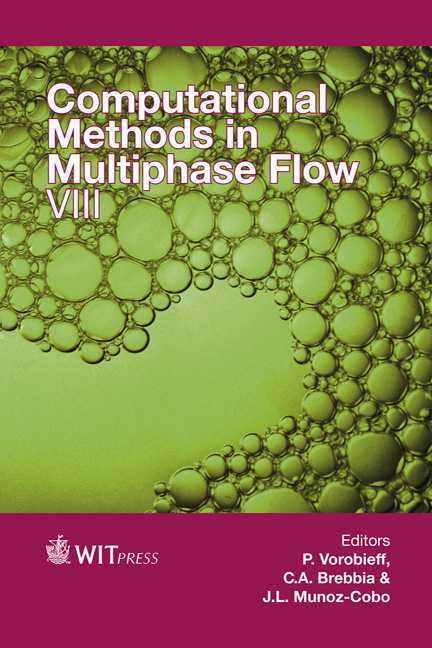Behaviour Of Biomass Particles In A Large Scale (2–4MWth) Bubbling Bed Reactor
Price
Free (open access)
Transaction
Volume
89
Pages
10
Page Range
151 - 160
Published
2015
Size
507 kb
Paper DOI
10.2495/MPF150131
Copyright
WIT Press
Author(s)
T. Berdugo Vilches, E. Sette, H. Thunman
Abstract
Biomass is regarded as an interesting fuel for energy-related processes owing to its renewable nature. However, the high volatile content of biomass adds a number of difficulties to the fuel conversion and process operation. In the context of fluidized bed reactors, several authors have observed that devolatilizing fuel particles tend to float on the surface of a gas-fluidized bed of finer solids. This behaviour, known as segregation, leads to undesired effects such as poor contact between volatiles and bed material. Previous investigations on segregation of gas-emitting particles in fluidized beds are conducted in small units and they are often operated at rather low gas velocities, typically between the minimum fluidization velocity (umf) and 2·umf. Therefore, it is not known to what extent such results are of relevance for industrial scale units and for higher fluidization velocities that are commonly used in large bubbling beds. In this paper the behaviour of biomass particles in a large scale bubbling bed reactor is investigated. Tests were conducted at a wide range of fluidization velocities with three different bed materials of varying particle size and density. The fuel was wood pellets and the fluidization medium was steam, which makes the findings relevant for indirect gasification, chemical looping combustion (CLC) and bubbling bed combustion applications. The experiments were recorded by means of a digital video camera and the digital images were subsequently analysed qualitatively. The results show high level of segregation at fluidization velocity up to 3.5 umf. Beyond this point fuel mixing was significantly enhanced by increasing fluidization velocities. At the highest fluidization velocity tested (i.e. >8 umf), a maximum degree of mixing was achieved.
Keywords
bubbling bed, biomass, fuel segregation, digital image analysis





